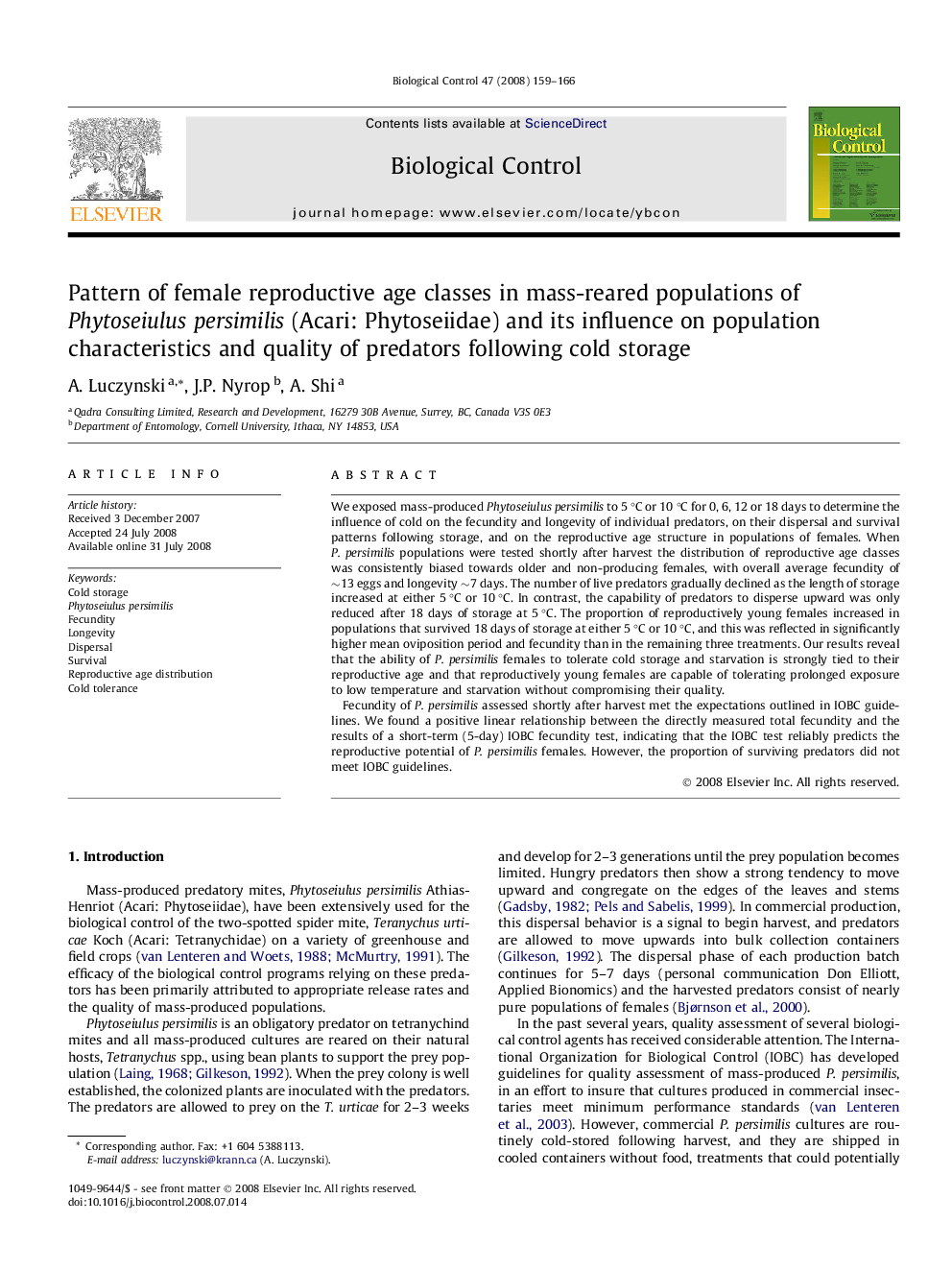| Article ID | Journal | Published Year | Pages | File Type |
|---|---|---|---|---|
| 4504856 | Biological Control | 2008 | 8 Pages |
We exposed mass-produced Phytoseiulus persimilis to 5 °C or 10 °C for 0, 6, 12 or 18 days to determine the influence of cold on the fecundity and longevity of individual predators, on their dispersal and survival patterns following storage, and on the reproductive age structure in populations of females. When P. persimilis populations were tested shortly after harvest the distribution of reproductive age classes was consistently biased towards older and non-producing females, with overall average fecundity of ∼13 eggs and longevity ∼7 days. The number of live predators gradually declined as the length of storage increased at either 5 °C or 10 °C. In contrast, the capability of predators to disperse upward was only reduced after 18 days of storage at 5 °C. The proportion of reproductively young females increased in populations that survived 18 days of storage at either 5 °C or 10 °C, and this was reflected in significantly higher mean oviposition period and fecundity than in the remaining three treatments. Our results reveal that the ability of P. persimilis females to tolerate cold storage and starvation is strongly tied to their reproductive age and that reproductively young females are capable of tolerating prolonged exposure to low temperature and starvation without compromising their quality.Fecundity of P. persimilis assessed shortly after harvest met the expectations outlined in IOBC guidelines. We found a positive linear relationship between the directly measured total fecundity and the results of a short-term (5-day) IOBC fecundity test, indicating that the IOBC test reliably predicts the reproductive potential of P. persimilis females. However, the proportion of surviving predators did not meet IOBC guidelines.
